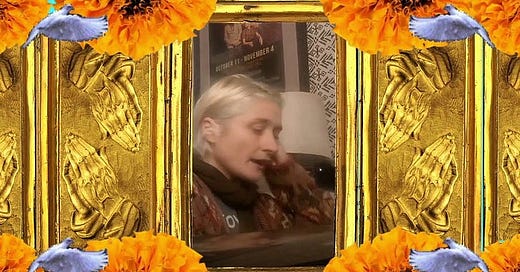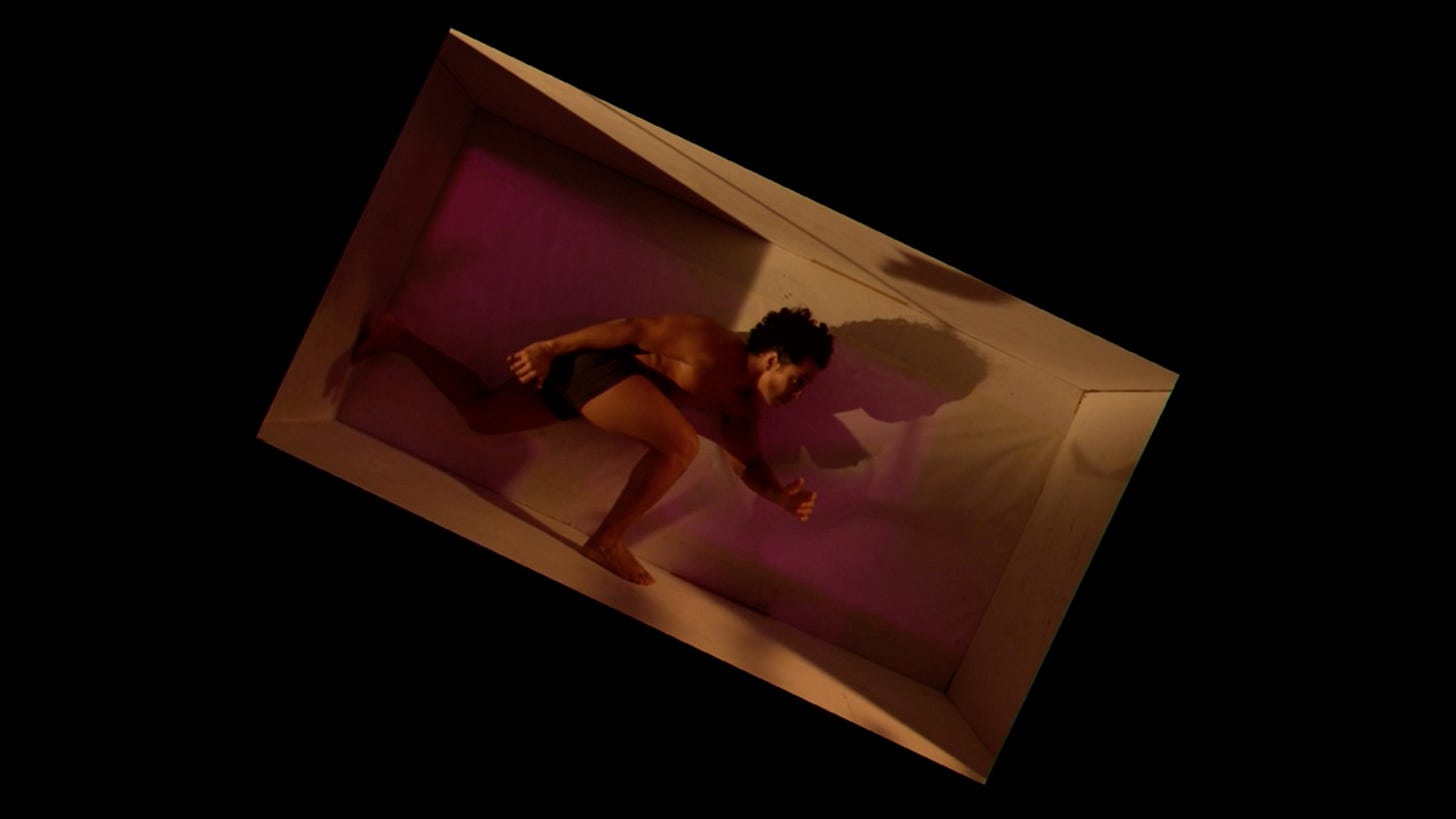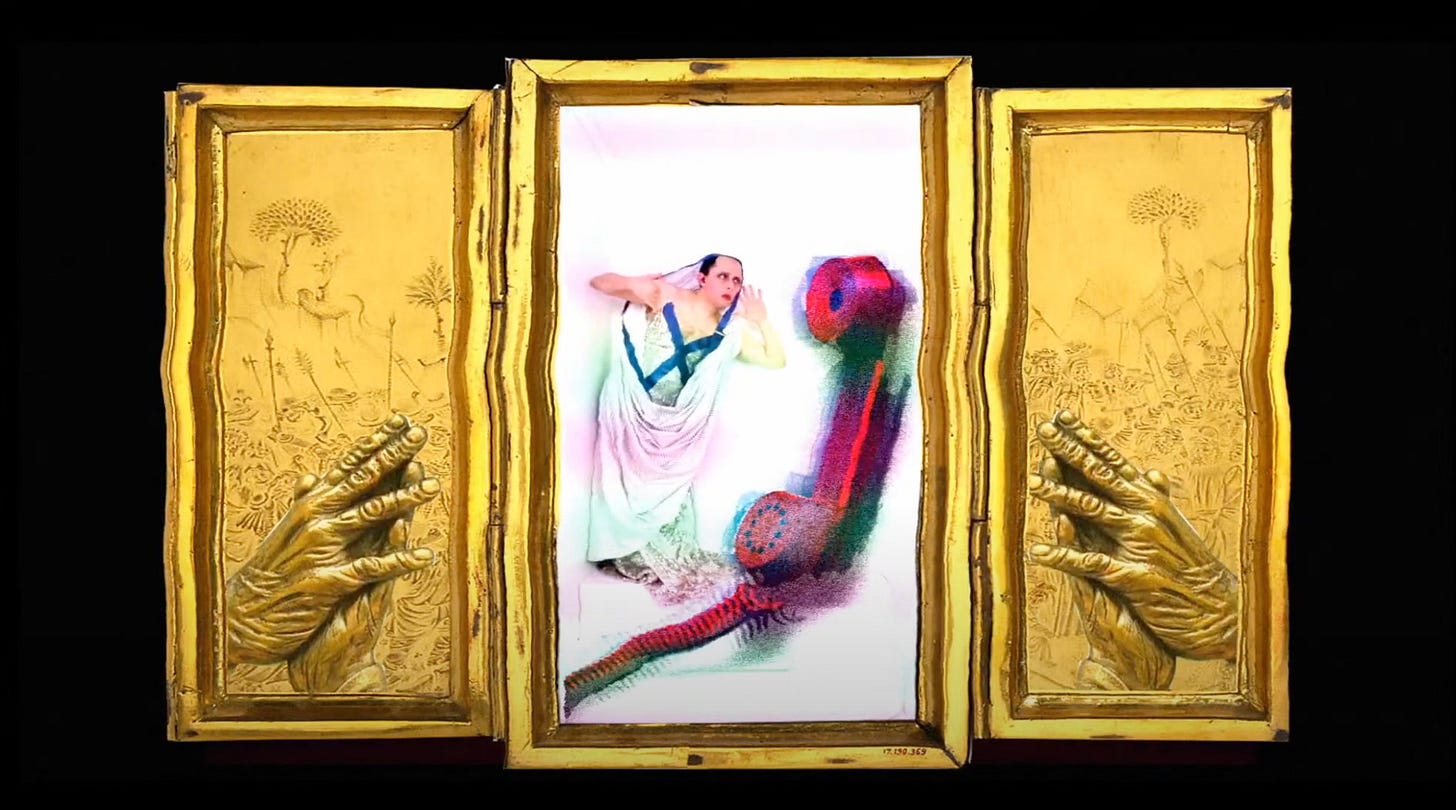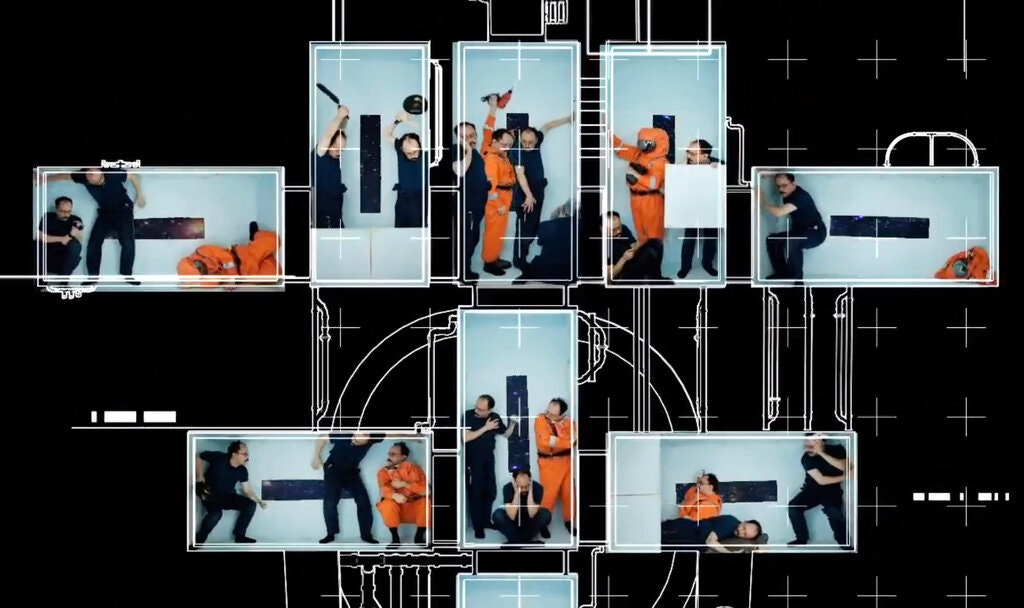Transition #5 - Theater In Quarantine edition
Talking to TiQ about Heather Christian's new Mother Teresa musical, “proof of liveness," and the future of digital theater
Theater in Quarantine’s first live broadcast, The Neighbor by Franz Kafka, was 12 minutes with one man and one chair. Their latest, I am Sending You the Sacred Face, is a 40-minute musical portrait of Mother Teresa composed and sung by Heather Christian (Animal Wisdom) and performed in drag by their founder Joshua William Gelb.
Premiering Monday at 7pm, Sacred Face may be TiQ’s most ambitious work yet. Yet it also returns them to the 2’x4’x8’ closet where it all began.
In March, director-performer Joshua William Gelb converted a closet inside his East Village apartment into a white-box theater and began broadcasting virtual work. This fall, they expanded into a second "closet” space built in Gowanus near Theater Mitu, which allowed Eric Berryman, co-star of Chekhov adaptation Notes from an Enumerator, to join them.
Recently, with the support of La MaMa and CultureHub, Gelb and choreographer Katie Rose McLaughlin invited more collaborators - including playwright Madeleine George and choreographer Raja Feather Kelly, who joined them on Mute Swan at CultureHub.
Sacred Face returns the company to Gelb’s apartment. I spoke to Gelb and McLaughlin about a year of growth, experimentation and, at times, failure.
How did your fall expansion into bringing on more collaborators and building a second “closet” come about?
KATIE ROSE MCLAUGHLIN: We had this good thing going, and we were just able to expand the scope of it and dream a little bit bigger.
JOSHUA WILLIAM GELB: We first tried out the second closet with Notes From An Enumerator, and I call it our major failure - technically, at least. We were never able to quite figure out how to synchronize the two closets.
KATIE ROSE: I made a list of writers that I was interested in and Madeline George was at the top of the list. So then that’s how Mute Swan came to be. She wrote this beautiful piece of text and then we just started dreaming about it.
What are the new possibilities that the second space opened up? For instance, there is one transition moment in Mute Swan where performer Chris Bell tears up the floor, which I’m guessing would have been harder in the first closet.
KATIE ROSE: A lot of our conversations were specifically about gravity. Mute Swan is a piece about a bird. We were like: if we’re gonna fuck with gravity, let’s really fuck with gravity. And because we had a couple extra hands on deck, we could do new things like that [moment], which required a crazy changeover in between shows.
How do you collaborate with outside writers - is there any guidance outside of the size of the space, or do you just tell them to go wild?
KATIE ROSE: Me and Madeleine didn’t really talk about writing for the physical space - we talked more about writing for the time. She knew that we could create a world, from the ground up, that would support whatever text she wrote.
JOSHUA: We’re constantly just expanding and pushing the boundaries of what’s possible within eight square feet. I’d always fantasized about doing a musical in the closet. Heather Christian found us, and we had a conversation about what she called her “orphan babies.” All of these ideas that she’s always wanted to write, but there just isn’t a place for them - particularly the ones that don’t really fill out an evening. And one of those ideas was a 40 minute drag musical about Mother Teresa.
It definitely seems like your most ambitious undertaking yet.
JOSHUA: It’s a bit of a cliche for us to say at this point, but yes.
KATIE ROSE: We’ve done a lot of movement, but we haven’t put singing and dancing together yet.
JOSHUA: Technically we aren’t now either - I’m lip syncing the entire show to Heather’s voice. She has done the singing already. Then we brought on Dito van Reigersberg, who is Martha Graham Cracker, to work with us as our drag dramaturg and explore the complicated questions around what it means to play Mother Teresa in drag.
Mother Teresa had, after her original calling, an extraordinarily long “dark night of the soul.” She stopped hearing from God. So for decades, she presented this facade of santliness, but internally she was going through an immense crisis of faith. So the whole piece is interrogating when our good work can become a sort of drag.
How does this expressionist study of Mother Teresa reflect on how we’re living right now?
JOSHUA: It is a time of immense activism and humanitarianism - and in some cases, the posturing of activism and humanitarianism. There’s something really remarkable about her dedication to suffering with those she was helping. Do we have to actually make sacrifices in order to be the change we wish to see in the world? Mother Teresa’s answer to that would be, absolutely. But maybe that’s a little hard for someone like me, or a contemporary social media activist, to hear.
As your shows have become more technically elaborate, sometimes it can be almost hard to believe that they are being performed live. Which is mostly a compliment to the work. But I wonder if you guys think about how to keep that excitement of the “liveness”?
JOSHUA: You’re hitting our major dilemma right on the head. I read your review of The 7th Voyage of Egon Tichy, and in so many ways I agree with you. [In a dialogue with Daniel Krane on Exeunt, this author wrote: “Apparently parts of 7th Voyage were in fact live, but I wouldn’t have known that unless you told me, so it’s kind of immaterial. I didn’t feel it.”]
It’s so frustrating to us that unlike in the theater, where the suspension of disbelief is taken for granted, here there’s nothing but doubt that we’re doing it live. The “proof of liveness” is up to us. And we keep trying to figure out ways to do that. Some have been more successful than others.
KATIE ROSE: It is something that we talk about in almost every day of rehearsal: “How is this showing liveness?”
I mean, it’s an open question how important it is that virtual theater be live. It’s important to me, and it seems like it’s important to you guys?
JOSHUA: Yeah. To us, it’s what allows us to hold on to the idea of theater. We started out doing more pre-recorded stuff back in March and April, some of which I’m extraordinarily proud of - [but] I don’t know if I could justify continuing to make work in a closet the same way if it was always pre-recorded.
It became an obsession for me to think about how we could maintain the idea of liveness. So, trying as little as possible to make cuts, or step aside of our proscenium. And of course we break rules all the time. But those rules have become sort of essential to how we view our venue as a theatrical venue, and not just a cinematic one.
Joshua, when you started Theater in Quarantine in March, did you imagine it taking you this far? Or was it just something to keep yourself from going insane?
JOSHUA: I’m just going insane on a longer scale.
This is the dream of what I hoped it would continue doing. I’m really excited that it has managed to gather attention and that we’ve been able to bring so many incredible artists into the space as collaborators.
We always said we would keep doing this until theaters open. It’s entirely possible we’ll keep going in some capacity [after that]. It’s hard to know right now what’s in store for digital theater, ultimately.
That being said, it is a tool. Maybe we don’t know exactly what its ultimate function is yet, but it will take on a function in some capacity. It’s exciting to be at the experimental phase when we don’t know, and we can just play.






